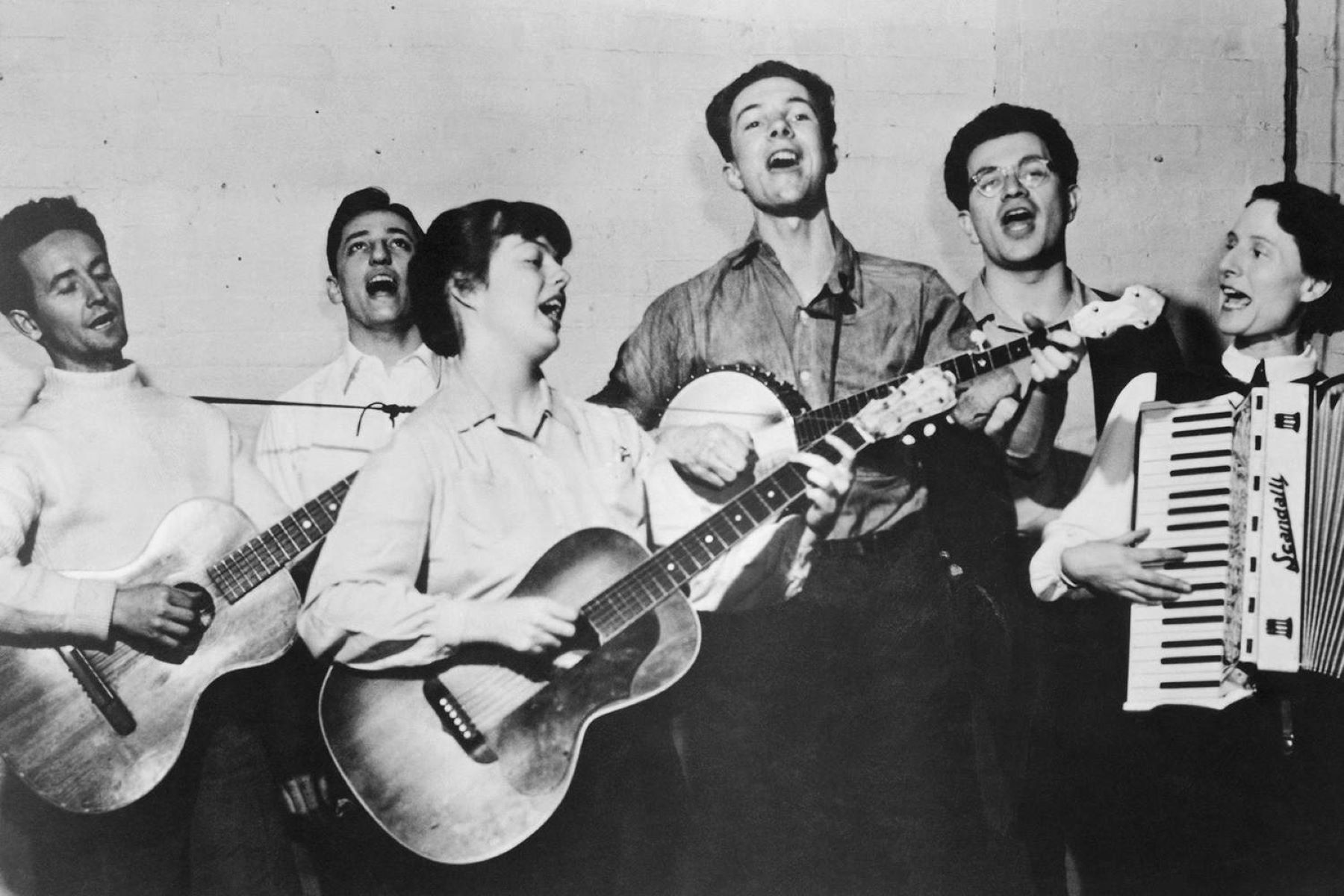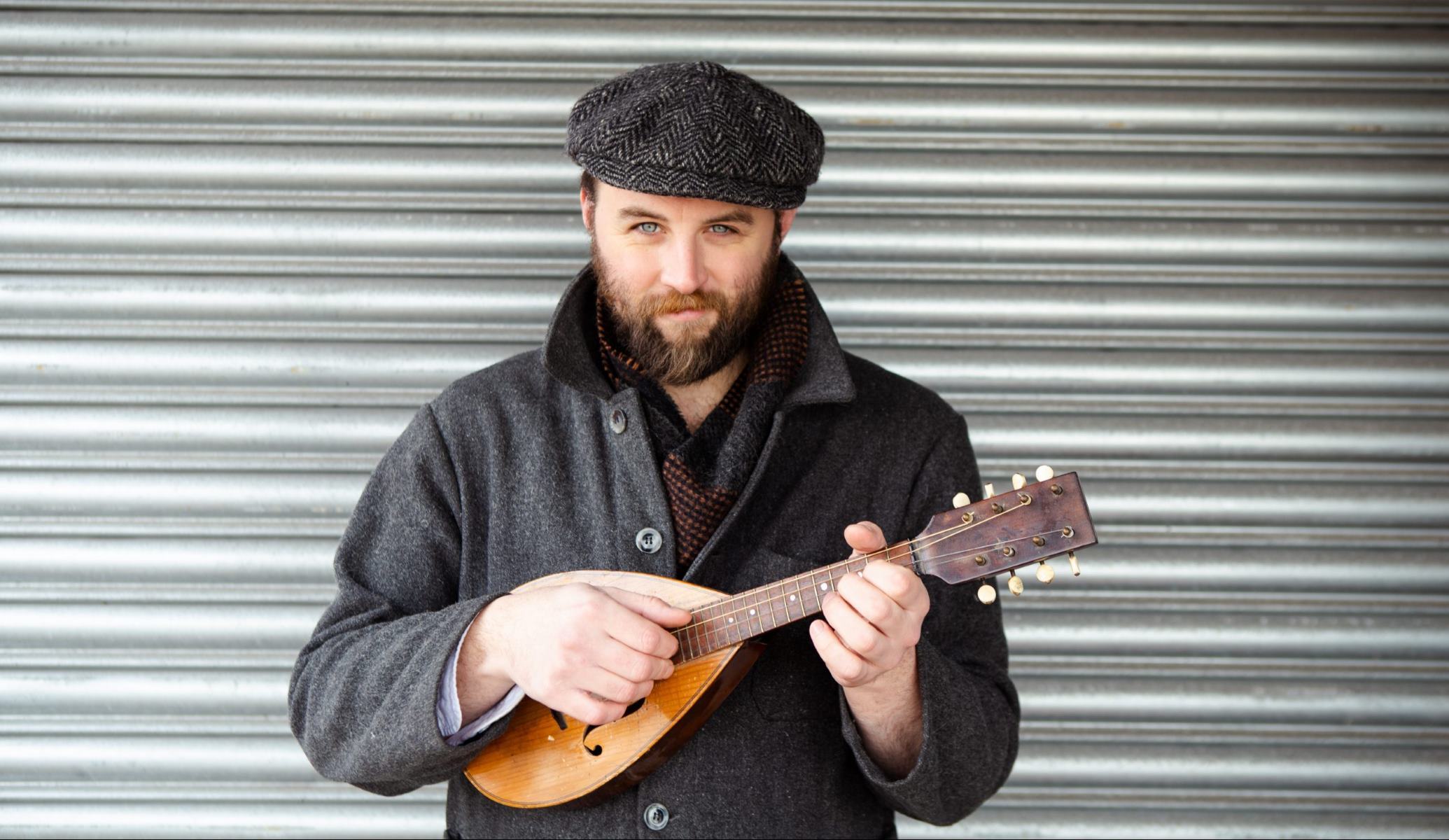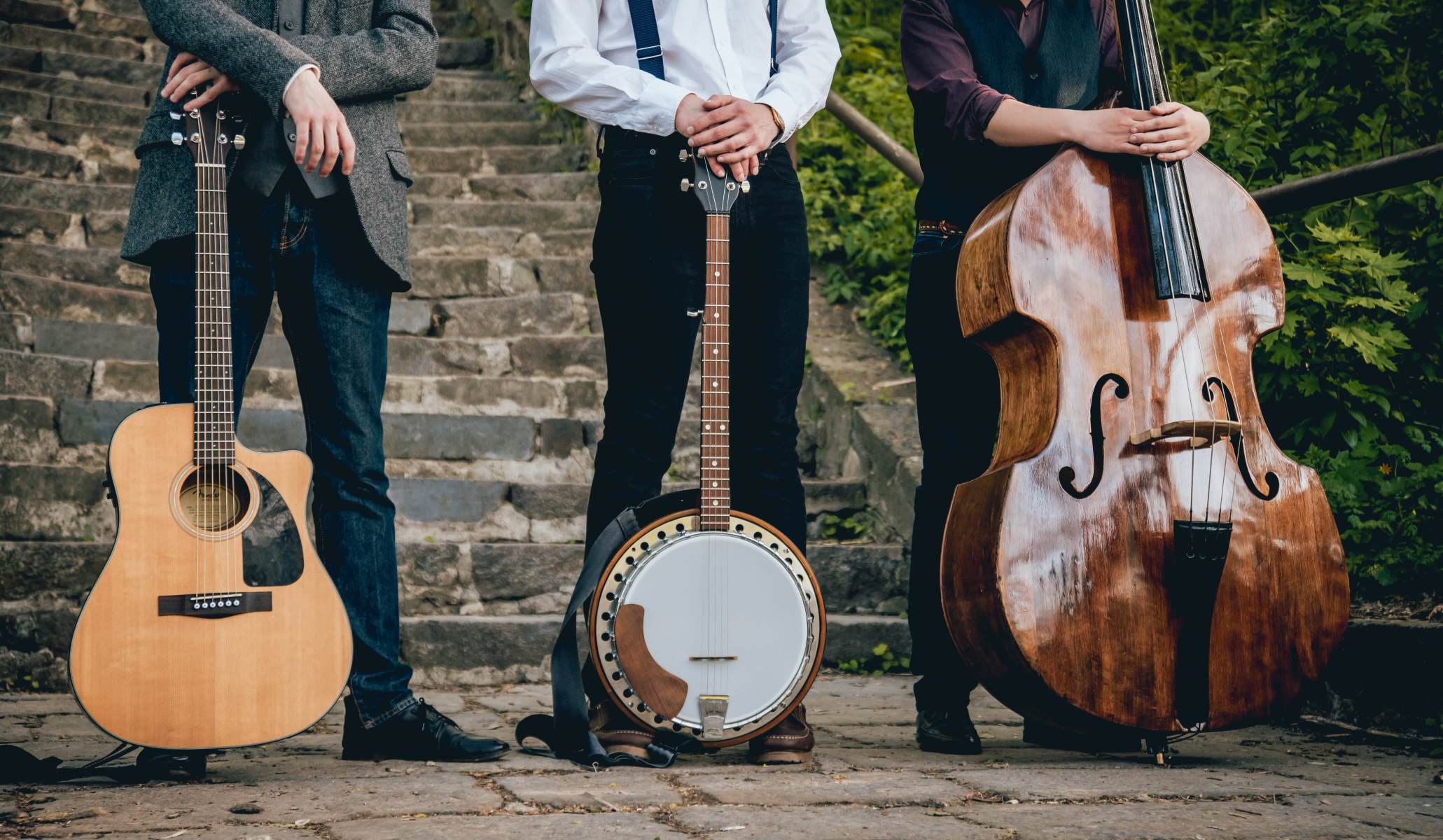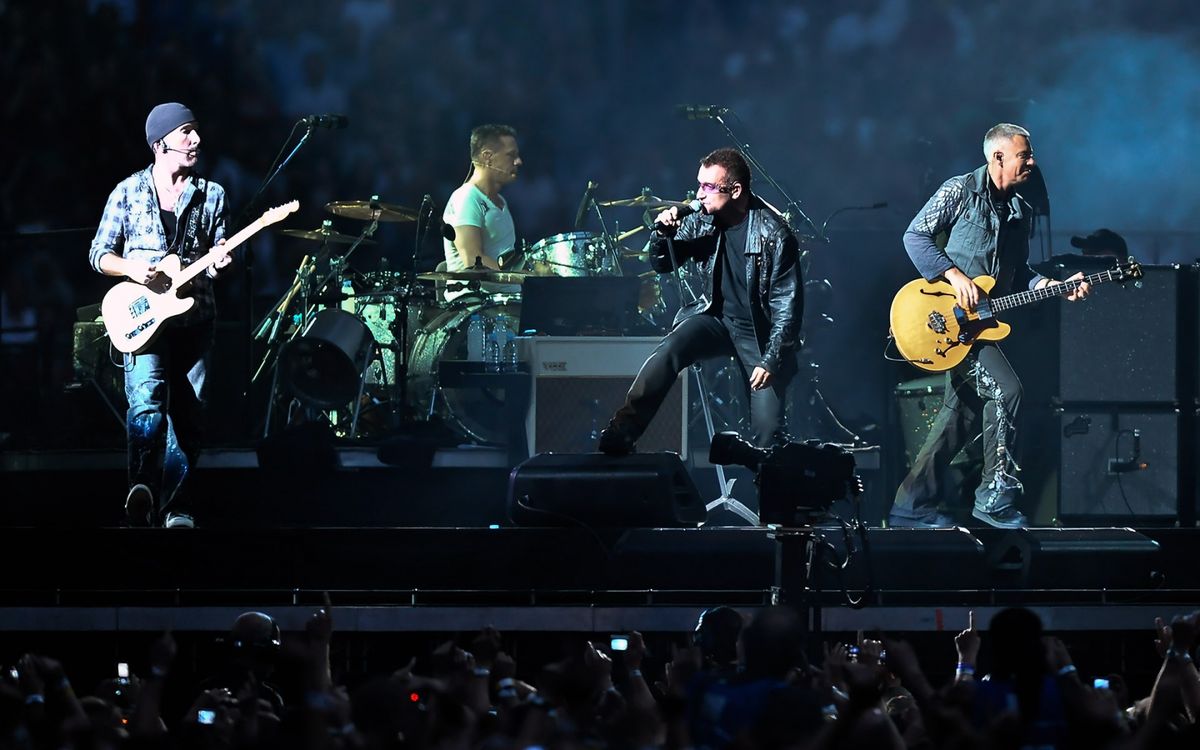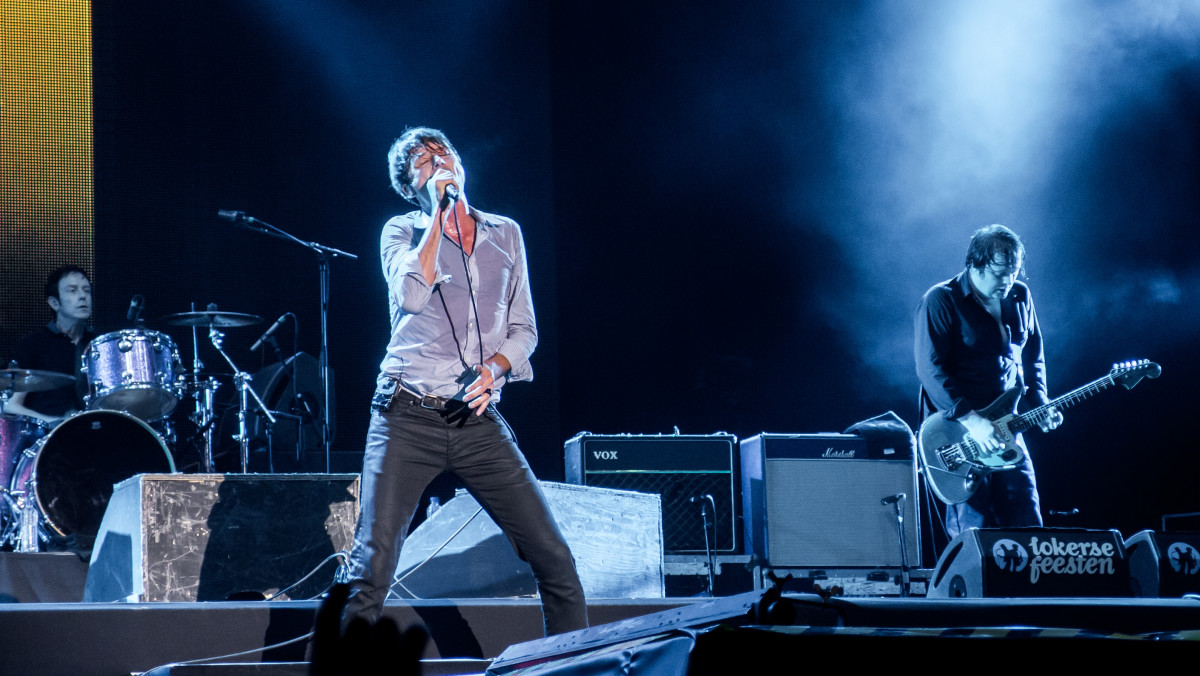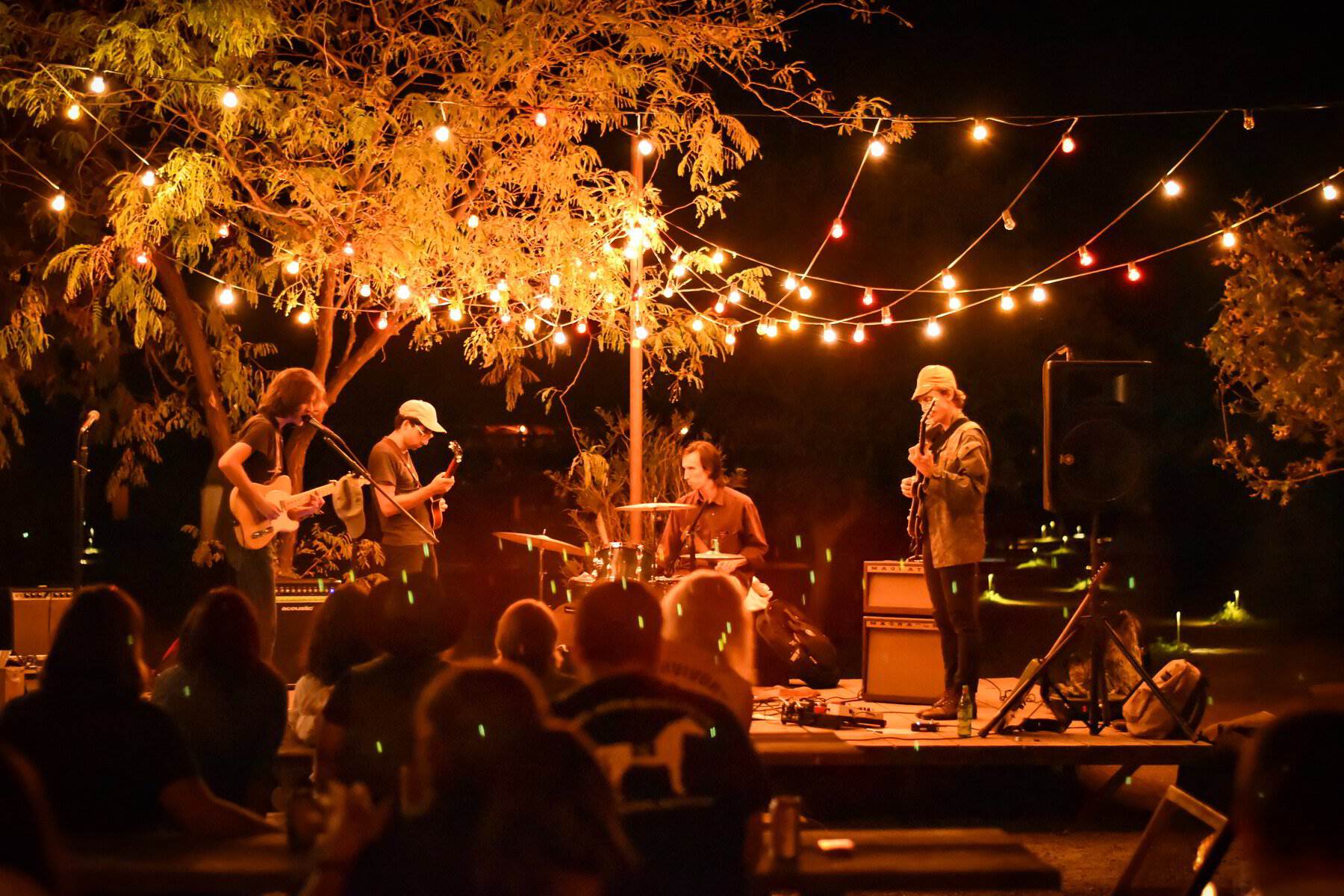

Folk
What Does Folk Rock In Music
Modified: March 11, 2024
Discover the captivating world of folk rock music, blending the timeless melodies and storytelling of folk with the energy and passion of rock. Explore the roots and evolution of this beloved genre.
(Many of the links in this article redirect to a specific reviewed product. Your purchase of these products through affiliate links helps to generate commission for AudioLover.com, at no extra cost. Learn more)
Table of Contents
Introduction
Folk rock is a genre of music that combines elements of traditional folk music with the energy and instrumentation of rock music. It emerged in the mid-1960s as a reaction to the intense political and social climate of the time. With its introspective lyrics and melodic riffs, folk rock quickly became a significant part of the music landscape, captivating listeners with its sentimental and poignant themes.
Initially, folk rock was seen as a bridge between the politically charged folk music of the time and the popular rock music scene. It offered a unique blend of acoustic guitars, harmonicas, and thoughtful songwriting, coupled with the electrifying sound of drums, bass, and electric guitars. This fusion created a distinct sound that resonated with a generation searching for meaning and expression.
The term “folk rock” was first used to describe the music of The Byrds, one of the pioneers of the genre. Their 1965 hit single, “Mr. Tambourine Man,” showcased their signature jangly guitar sound and harmonious vocal arrangements, setting the template for future folk rock acts.
Throughout its history, folk rock has evolved and expanded its boundaries, incorporating various influences and subgenres. From the introspective and poetic lyrics of Bob Dylan to the electrifying sound of bands like Mumford & Sons and Fleet Foxes, the genre has continued to captivate audiences with its distinctive blend of folk sensibilities and rock energy.
This article explores the definition, historical background, characteristics, influences, and notable artists of folk rock music. It also examines the contemporary folk rock scene and addresses some of the criticisms and controversies that have surrounded the genre. So, grab your acoustic guitar and join us on this sonic journey through the world of folk rock!
Definition of Folk Rock
Folk rock is a genre of music that combines various elements of traditional folk music with the instrumentation, energy, and production techniques of rock music. It emerged in the mid-1960s as a fusion of the socially conscious lyrics and acoustic sound of folk music with the electrifying sound and performance of rock music.
At its core, folk rock retains the storytelling and introspective nature of traditional folk music, often featuring lyrics that reflect personal experiences, social issues, or political themes. The instrumentation typically includes acoustic guitars, banjos, mandolins, and harmonicas, merged with the driving force of drums, electric guitars, and bass. This combination creates a dynamic sound that blends the intimacy and warmth of folk with the power and excitement of rock.
One of the defining features of folk rock is the use of vocal harmonies, which are often layered to create rich, melodic textures. This element adds a sense of unity and solidarity to the music, further reinforcing its connection to the folk tradition of collective singing and community engagement.
Furthermore, folk rock embraces the concept of storytelling through music, with an emphasis on narrative-driven songwriting. Many folk rock songs tell tales of love, loss, struggle, and resilience, drawing from personal experiences or drawing inspiration from historical events.
While folk rock may have originated as a blending of two distinct genres, it has since developed into a genre with its own unique identity. Today, folk rock encompasses a wide range of styles and subgenres, including acoustic folk rock, psychedelic folk rock, and indie folk.
It is important to note that the definition of folk rock can be subjective, as artists often incorporate elements of other genres into their music, blurring the boundaries between folk rock and its musical relatives. However, the essence of folk rock lies in the fusion of folk and rock elements, creating a sound that is both familiar and innovative.
Historical Background of Folk Rock
The historical background of folk rock can be traced back to the 1960s, a time marked by social and political unrest, civil rights movements, and a yearning for artistic expression and authenticity.
During this period, the American folk music revival was at its peak, with artists like Joan Baez, Pete Seeger, and Bob Dylan leading the charge. Their music resonated with a generation seeking to challenge the status quo and promote social change through their lyrics and melodies.
As the folk music movement gained momentum, young musicians began experimenting with amplifying their acoustic instruments and incorporating elements of rock music into their performances. This blending of folk and rock was a significant turning point that laid the foundation for the birth of folk rock.
One of the key catalysts for the rise of folk rock was the release of Bob Dylan’s album “Bringing It All Back Home” in 1965. The album showcased a new sound for Dylan, featuring a mix of both acoustic and electric songs. This move sparked controversy among his folk audience, but it also opened up a new musical landscape and inspired other artists to explore the possibilities of folk rock.
The Byrds, a band from Los Angeles, played a crucial role in popularizing folk rock with their electrified versions of traditional folk songs and original compositions. Their cover of Bob Dylan’s “Mr. Tambourine Man” became a massive hit in 1965 and introduced a melodic and upbeat sound that captured the hearts of listeners.
Another significant figure in the folk rock scene was Simon & Garfunkel. Their harmonies and introspective lyrics, combined with Paul Simon’s masterful songwriting, created a sound that resonated with the turbulent times. Songs like “The Sound of Silence” and “Scarborough Fair/Canticle” solidified their place in the genre and highlighted the storytelling aspect of folk rock.
Throughout the 1960s, folk rock continued to evolve and gain popularity, with artists like Buffalo Springfield, The Lovin’ Spoonful, and Crosby, Stills, Nash & Young pushing the boundaries of the genre. The Woodstock festival in 1969 showcased the diversity and influence of folk rock, bringing together musicians from various backgrounds to celebrate the sound and spirit of the movement.
By the 1970s, folk rock had made a significant impact on the music industry, paving the way for the emergence of other subgenres like country rock and folk-pop. While its popularity may have waned in mainstream music, folk rock has remained a vital and influential genre, with artists like Mumford & Sons, The Lumineers, and Fleet Foxes carrying the torch and introducing it to new generations.
Characteristics of Folk Rock Music
Folk rock is characterized by a unique blend of traditional folk music and the energetic instrumentation and production techniques of rock music. It combines the heartfelt storytelling of folk with the electrifying sound and rhythm of rock, resulting in a style that is both emotionally resonant and musically engaging.
Here are some key characteristics that define the genre:
- Acoustic and Electric Instruments: Folk rock typically features a mix of acoustic instruments like guitars, banjos, mandolins, and harmonicas, alongside the electrified sound of drums, electric guitars, and bass. This blending of acoustic and electric elements creates a dynamic and layered sonic landscape.
- Melodic and Catchy Choruses: Folk rock often incorporates melodic and infectious choruses that are easy to sing along to. These catchy hooks, combined with meaningful lyrics, create an immediate connection with listeners and invite participation.
- Storytelling and Personal Reflection: The genre is known for its emphasis on storytelling and personal reflection. Folk rock songs often tell tales of love, loss, social issues, and personal experiences, offering introspective and thought-provoking narratives to the listeners.
- Vocal Harmony: Vocal harmony is a prominent feature of folk rock, with artists frequently layering their voices to create rich and harmonious textures. The intertwining voices add depth and emotion to the music, emphasizing the communal aspect of folk traditions.
- Social and Political Commentary: Folk rock has a long history of addressing social justice issues and political commentary. It serves as a platform for artists to express their thoughts, challenge the status quo, and inspire change through their lyrics.
- Blend of Traditional and Contemporary Influences: Folk rock incorporates traditional folk music elements, such as traditional melodies, themes, and song structures. However, it also embraces contemporary influences by infusing rock’s energy, distorted guitar solos, and modern production techniques.
- Emotional Depth and Intimacy: Folk rock often creates an emotional connection with listeners through its raw and intimate performances. The stripped-down nature of folk elements combined with personal and introspective lyrics evoke a sense of vulnerability and authenticity.
- Timeless Quality: Folk rock possesses a timeless quality that transcends generations. It has the ability to resonate with listeners of all ages, offering a universal appeal that withstands the test of time.
These characteristics collectively contribute to the distinct sound and allure of folk rock music, making it a genre that continues to captivate and inspire audiences around the world.
Influences on Folk Rock
Folk rock music draws influences from various musical traditions and genres, shaping its unique sound and identity. Here are some notable influences on the development of folk rock:
- Traditional Folk Music: Traditional folk music, with its emphasis on storytelling and acoustic instrumentation, forms the foundation of folk rock. Artists like Woody Guthrie, Pete Seeger, and Lead Belly provided the blueprint for the folk revival in the 1960s and influenced artists to incorporate folk elements into their music.
- Rock and Roll: The electrified sound and energy of rock and roll had a profound impact on the development of folk rock. Artists such as Elvis Presley and Chuck Berry brought a new level of excitement and amplified instrumentation to the music scene, inspiring folk musicians to experiment and blend their acoustic folk sound with the power of rock.
- Blues: The blues genre, with its soulful vocals and expressive guitar playing, influenced many folk rock artists. Musicians like Bob Dylan and The Rolling Stones infused elements of blues into their music, adding a touch of grit and emotion to their folk rock sound.
- Country Music: Country music’s storytelling tradition and rich vocal harmonies have also played a role in shaping folk rock. Artists like Johnny Cash and The Byrds demonstrated the potential of blending country and folk elements, creating a distinct sound that appealed to a wide audience.
- Bob Dylan: Bob Dylan, often referred to as the voice of a generation, had a monumental influence on the folk rock genre. His poetic and introspective lyrics, coupled with his ability to seamlessly blend folk and rock music, inspired countless artists and played a pivotal role in popularizing folk rock.
- The British Invasion: The British invasion of the 1960s, led by bands like The Beatles, The Rolling Stones, and The Kinks, brought a new wave of musical influence to the folk rock scene. These British bands incorporated folk melodies, harmonies, and instrumentation into their own rock music, inspiring American artists to further explore the fusion of folk and rock.
- Psychedelic Rock: The psychedelic rock movement of the late 1960s also left its mark on folk rock. Artists like Jefferson Airplane and The Grateful Dead incorporated folk elements into their experimental and trippy music, pushing the boundaries of the genre and creating a unique blend of folk, rock, and psychedelia.
- World Music: As folk rock continued to evolve, artists began incorporating influences from various world music traditions. African, Latin, and Middle Eastern rhythms and melodies found their way into the music, adding an exotic and diverse flavor to the folk rock sound.
These influences, among others, have shaped the evolution of folk rock, allowing the genre to continuously reinvent itself while staying true to its roots. The result is a rich tapestry of sounds and styles that continue to captivate audiences worldwide.
Popular Folk Rock Artists and Bands
Throughout the history of folk rock, numerous artists and bands have made a significant impact on the genre, shaping its sound and influencing generations of musicians. Here are a few notable figures in the world of folk rock:
- Bob Dylan: Bob Dylan is often considered the pioneer of folk rock. With his poetic lyrics, distinctive voice, and eclectic musical style, Dylan revolutionized the genre. Songs like “Blowin’ in the Wind” and “Like a Rolling Stone” became anthems for social change and showcased his unparalleled songwriting talent.
- The Byrds: The Byrds played a crucial role in popularizing folk rock in the mid-1960s. Known for their tight vocal harmonies and jangly guitar sound, their cover of Bob Dylan’s “Mr. Tambourine Man” skyrocketed them to fame. Hits like “Turn! Turn! Turn!” and “Eight Miles High” solidified their status as folk rock pioneers.
- Simon & Garfunkel: Simon & Garfunkel’s music blended delicate harmony vocals and introspective lyrics, making them one of the most successful folk rock acts. Songs like “The Sound of Silence,” “Bridge Over Troubled Water,” and “Mrs. Robinson” showcased their exceptional songwriting abilities and captured the spirit of the era.
- Crosby, Stills, Nash & Young: Formed by the combination of David Crosby, Stephen Stills, Graham Nash, and Neil Young, this supergroup epitomized the folk rock sound of the late 1960s. Their harmonious vocals and politically charged lyrics resonated with audiences. Songs like “Woodstock” and “Ohio” became anthems of a generation.
- Joni Mitchell: Joni Mitchell’s unique blend of folk, jazz, and rock influences set her apart as an extraordinary artist. Her distinctive voice and poetic songwriting produced iconic songs like “Big Yellow Taxi,” “Both Sides Now,” and “A Case of You,” solidifying her position as one of the most influential folk rock musicians of all time.
- Neil Young: Neil Young’s contributions to folk rock are immeasurable. Known for his raw and emotive songwriting, Young’s music encompasses a wide range of styles, from acoustic ballads to electric guitar-driven anthems. Songs like “Heart of Gold,” “Old Man,” and “Rockin’ in the Free World” have become timeless folk rock classics.
- Mumford & Sons: In the 21st century, Mumford & Sons revitalized folk rock, bringing a fresh and energetic approach to the genre. Their blend of folk instruments, anthemic choruses, and impassioned performances earned them worldwide acclaim. Hits like “Little Lion Man,” “The Cave,” and “I Will Wait” catapulted them to international success.
- The Lumineers: The Lumineers achieved widespread popularity with their infectious folk rock melodies and heartfelt lyrics. Their chart-topping hit “Ho Hey” introduced them to a global audience, and subsequent songs like “Ophelia” and “Stubborn Love” cemented their status as one of the leading contemporary folk rock bands.
- Fleet Foxes: Fleet Foxes’ intricate harmonies and lush instrumentation represent a modern take on folk rock. Their self-titled debut album garnered critical acclaim, featuring standout tracks like “White Winter Hymnal” and “Helplessness Blues.” Their music combines traditional folk elements with a distinct indie sensibility.
This list only scratches the surface of the diverse range of artists and bands that have contributed to the folk rock genre. Each artist brings their unique style and perspective, adding to the rich tapestry of folk rock music and ensuring its enduring popularity.
Contemporary Folk Rock Scene
The contemporary folk rock scene is a vibrant and thriving landscape that continues to evolve and push the boundaries of the genre. While paying homage to its roots, contemporary folk rock artists bring their unique perspectives and blend diverse musical influences to create a fresh and dynamic sound.
One key characteristic of the contemporary folk rock scene is the resurgence of acoustic instruments and back-to-basics approach. Many artists are incorporating elements of traditional folk music, such as fingerpicking guitar styles and stripped-down arrangements, to create intimate and heartfelt compositions.
Additionally, there is a strong emphasis on intricate vocal harmonies and the art of storytelling. Contemporary folk rock artists embrace the power of their voices, weaving together rich and layered harmonies that evoke a sense of nostalgia and warmth. Their lyrics often explore personal experiences, social issues, and the complexities of modern life, connecting with listeners on a deeper level.
The contemporary folk rock scene also incorporates elements from a wide range of genres, blurring the lines between musical categories. Artists experiment with incorporating elements of indie folk, alternative rock, Americana, and even electronic music into their sound, resulting in a diverse and eclectic range of styles.
Bands like The Head and the Heart, The Decemberists, and Of Monsters and Men blend folk rock with indie sensibilities, crafting infectious melodies and introspective lyrics that resonate with a modern audience. They bring a fresh perspective to the genre while staying true to the foundational elements of folk rock.
On the other hand, artists like Iron & Wine and Bon Iver explore a more atmospheric and ethereal side of folk rock, incorporating ambient textures and experimental production techniques. Their introspective and introspective soundscapes create a captivating and immersive listening experience.
Furthermore, the contemporary folk rock scene is not limited to the English language. Artists like Rodrigo y Gabriela infuse their music with folk influences from their native Mexico, creating a fusion of Latin rhythms and acoustic guitar virtuosity. This multicultural approach adds a global perspective to the genre and showcases the universality of folk rock.
The contemporary folk rock scene also benefits from the accessibility and reach of digital platforms and online communities. Independent artists can connect with a global audience, breaking free from traditional industry constraints and cultivating a dedicated fan base through streaming services, social media, and grassroots promotion.
Overall, the contemporary folk rock scene is a thriving and dynamic landscape where artists continue to push the boundaries of the genre, blending tradition with innovation and creating music that is both reflective of the past and relevant to the present. Whether drawing from traditional folk roots or embracing the influences of various genres, contemporary folk rock artists contribute to the genre’s richness and ensure its continued relevance in the modern music landscape.
Criticisms and Controversies Surrounding Folk Rock
While folk rock has enjoyed widespread acclaim and popularity, it has also faced its fair share of criticisms and controversies throughout its history. Here are some of the common criticisms and controversies surrounding the genre:
- Commercialization and Mainstream Appeal: Some critics argue that folk rock has been overly commercialized and watered down to cater to mainstream tastes. They claim that the genre has lost its authenticity and original spirit in favor of mass appeal, resulting in a diluted and formulaic sound.
- Purism and Authenticity: Folk purists may argue that folk rock strays too far from its traditional roots, compromising the purity and integrity of folk music. They believe that the incorporation of electric instruments and contemporary production techniques detracts from the essence of the genre.
- Appropriation and Cultural Misrepresentation: Folk rock, like any genre that draws inspiration from folk traditions, has been accused of cultural appropriation. Critics argue that some artists exploit and misrepresent folk music, appropriating its sounds and themes without fully understanding or respecting the cultural context from which they originate.
- Mainstream vs. Counterculture: Folk rock’s rise in popularity coincided with the counterculture movements of the 1960s. However, some critics argue that as the genre became more mainstream, its rebellious and subversive nature was diluted, leading to a loss of its ability to drive political and social change.
- Genre Classification: The classification of artists and bands as “folk rock” can sometimes be a subject of debate. As the genre has evolved and blended with other styles, artists may embody elements of folk rock but also incorporate influences from other genres, making it challenging to categorize them definitively.
- Stagnation and Lack of Innovation: Critics argue that folk rock tends to stick to a familiar and predictable formula, resulting in a lack of innovation or experimentation. They assert that the genre often relies on the same chord progressions, lyrical themes, and instrumentation, hindering its potential for growth and evolution.
It is important to recognize that these criticisms reflect the subjective perspectives of individuals and do not undermine the significant contributions and cultural impact of folk rock. The genre continues to attract a wide audience, inspire new generations of musicians, and serve as a platform for artistic expression, social commentary, and storytelling.
Ultimately, the controversies and criticisms surrounding folk rock highlight the ongoing conversation and evolution of the genre. Folk rock continues to adapt and reinvent itself, incorporating new influences and pushing artistic boundaries while staying true to its roots and principles.
Conclusion
Folk rock is a genre of music that has captivated audiences for decades, blending the introspective and storytelling nature of folk with the vibrant energy and instrumentation of rock. From its humble beginnings in the 1960s to its present-day evolution, folk rock has left an indelible mark on the music landscape.
With its distinctive characteristics such as acoustic and electric instruments, melodic choruses, and lyrical depth, folk rock continues to resonate with listeners of all ages. It has provided a platform for artists to express their personal experiences, social and political views, and emotions, adding their unique voices to the rich tapestry of the genre.
The historical background of folk rock reveals its roots in the folk music revival and the influence of artists such as Bob Dylan, The Byrds, and Simon & Garfunkel. These pioneers paved the way for countless musicians to explore the fusion of folk and rock, establishing a genre that continues to inspire an ever-growing community of artists and fans.
The contemporary folk rock scene demonstrates the genre’s ability to adapt and evolve. Artists like Mumford & Sons, The Lumineers, and Fleet Foxes have added their modern twist to the genre, infusing it with fresh perspectives and hybrid influences. Meanwhile, the digital age and online platforms have allowed independent artists to reach global audiences, fostering a sense of community and expanding the genre’s reach.
While criticism and controversy have surrounded folk rock, addressing concerns about commercialization, authenticity, and cultural appropriation, the genre’s enduring popularity and impact cannot be denied. Folk rock remains a vehicle for social commentary, personal expression, and communal experiences.
In conclusion, folk rock stands as a testament to the power of blending genres, bridging generations, and telling stories through music. Its influence can be heard not only in the work of past icons but also in the vibrant and ever-evolving landscape of contemporary folk rock. As long as there are artists who are willing to embrace its spirit and push artistic boundaries, folk rock will continue to resonate and captivate for years to come.

